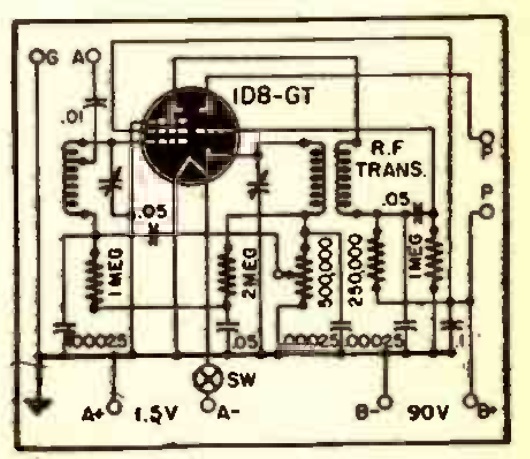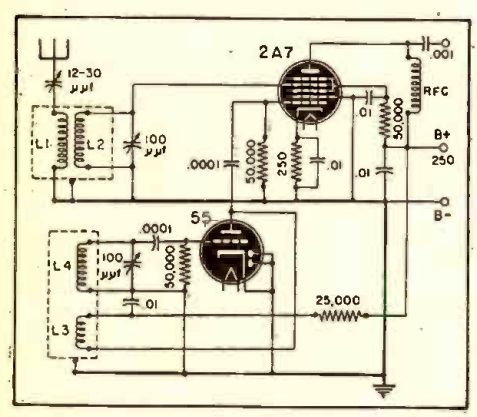 Seventy-five years ago this month, the March 1945 issue of Radio Craft magazine carried this one-tube receiver, submitted to the magazine by Sgt. L.R. Blattner, who was stationed at Tinker Field, Oklahoma. According to the serviceman, the set gave the maximum performance for the number of components, and it’s hard to dispute that claim. Despite having only one tube, the set had a stage of RF amplification, AVC, and two stages of AF.
Seventy-five years ago this month, the March 1945 issue of Radio Craft magazine carried this one-tube receiver, submitted to the magazine by Sgt. L.R. Blattner, who was stationed at Tinker Field, Oklahoma. According to the serviceman, the set gave the maximum performance for the number of components, and it’s hard to dispute that claim. Despite having only one tube, the set had a stage of RF amplification, AVC, and two stages of AF.
The signal is first applied to the pentode section of the dual tube, passed through the RF transformer, and then detected by the plate and cathode of the triode. Then, it’s applied again to the pentode, now acting as an AF amplifier. From there, the signal goes back to the triode where it’s amplified again.
The magazine also carried the shortwave converter below, sent in to the magazine by Richard E. Held of Sioux City, Iowa, who reported that he received stations from Tokyo to Brazzaville. It tuned 7-11 MHz, and used two tubes that the writer had lying around.

